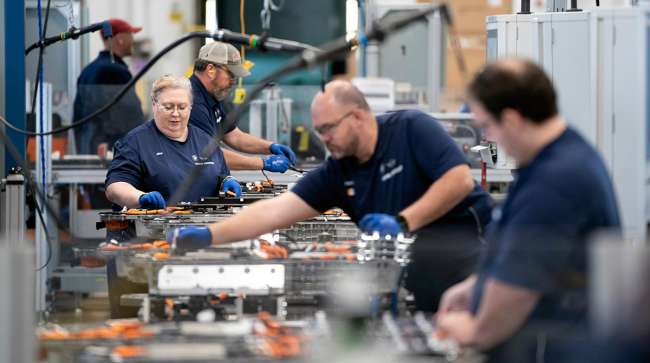Associated Press
US Added a Strong 227,000 Jobs in November

[Stay on top of transportation news: Get TTNews in your inbox.]
WASHINGTON — America’s job market rebounded in November, adding 227,000 workers in a solid recovery from the previous month, when the effects of strikes and hurricanes had sharply diminished employers’ payrolls.
Last month’s hiring growth was up considerably from a meager gain of 36,000 jobs in October. The government also revised up its estimate of job growth in September and October by a combined 56,000.
The Dec. 6 report from the Labor Department report also showed that the unemployment rate ticked up from 4.1% in October to a still-low 4.2%. Hourly wages rose 0.4% from October to November and 4% from a year earlier — both solid figures and slightly higher than forecasters had expected.
The November employment report provided the latest evidence that the U.S. job market remains durable even though it has lost significant momentum from the 2021-2023 hiring boom, when the economy was rebounding from the pandemic recession. The job market’s gradual slowdown is, in part, a result of the high interest rates the Federal Reserve engineered in its drive to tame inflation.
Payroll employment rises by 227,000 in November; unemployment rate changes little at 4.2% https://t.co/ZwrVfLviqL #JobsReport #BLSdata — BLS-Labor Statistics (@BLS_gov) December 6, 2024
The Fed jacked up interest rates 11 times in 2022 and 2023. Defying predictions, the economy kept growing despite much higher borrowing rates for consumers and businesses. But since early this year, the job market has been slowing.
Across industries last month, manufacturing companies added 22,000 jobs, reflecting the end of strikes at Boeing and elsewhere. Health care companies added 54,000 jobs, government agencies 33,000 and bars and restaurants 29,000. But retailers shed 28,000 jobs in November.
Americans as a whole have been enjoying unusual job security. This week, the government reported that layoffs fell to just 1.6 million in October, below the lowest levels in the two decades that preceded the pandemic. At the same time, the number of job openings rebounded from a 3½-year low, a sign that businesses are still seeking workers even though hiring has cooled.
The overall economy has remained resilient. The much higher borrowing costs for consumers and businesses that resulted from the Fed’s rate hikes had been expected to tip the economy into a recession. Instead, the economy kept growing as households continued to spend and employers continued to hire.
Want more news? Listen to today's daily briefing above or go here for more info
The economy grew at a 2.8% annual pace from July through September on healthy spending by consumers. Annual economic growth has topped a decent 2% in eight of the past nine quarters. And inflation has dropped from a 9.1% peak in June 2022 to 2.6% last month. Even so, Americans were deeply frustrated by still-high prices under the Biden-Harris administration, and partly for that reason chose last month to return Donald Trump to the White House.
While comparatively few Americans are losing jobs, those who do are finding it harder to land a new one: The average unemployed American in October had been out of work for 22.9 weeks, the longest such stretch in 2½ years.
The progress against inflation and the slowdown in hiring, which eases pressure on companies to raise wages and prices, led the Fed to cut its key rate in September and again last month. Another rate cut is expected to be announced when the Fed meets Dec. 17-18.




